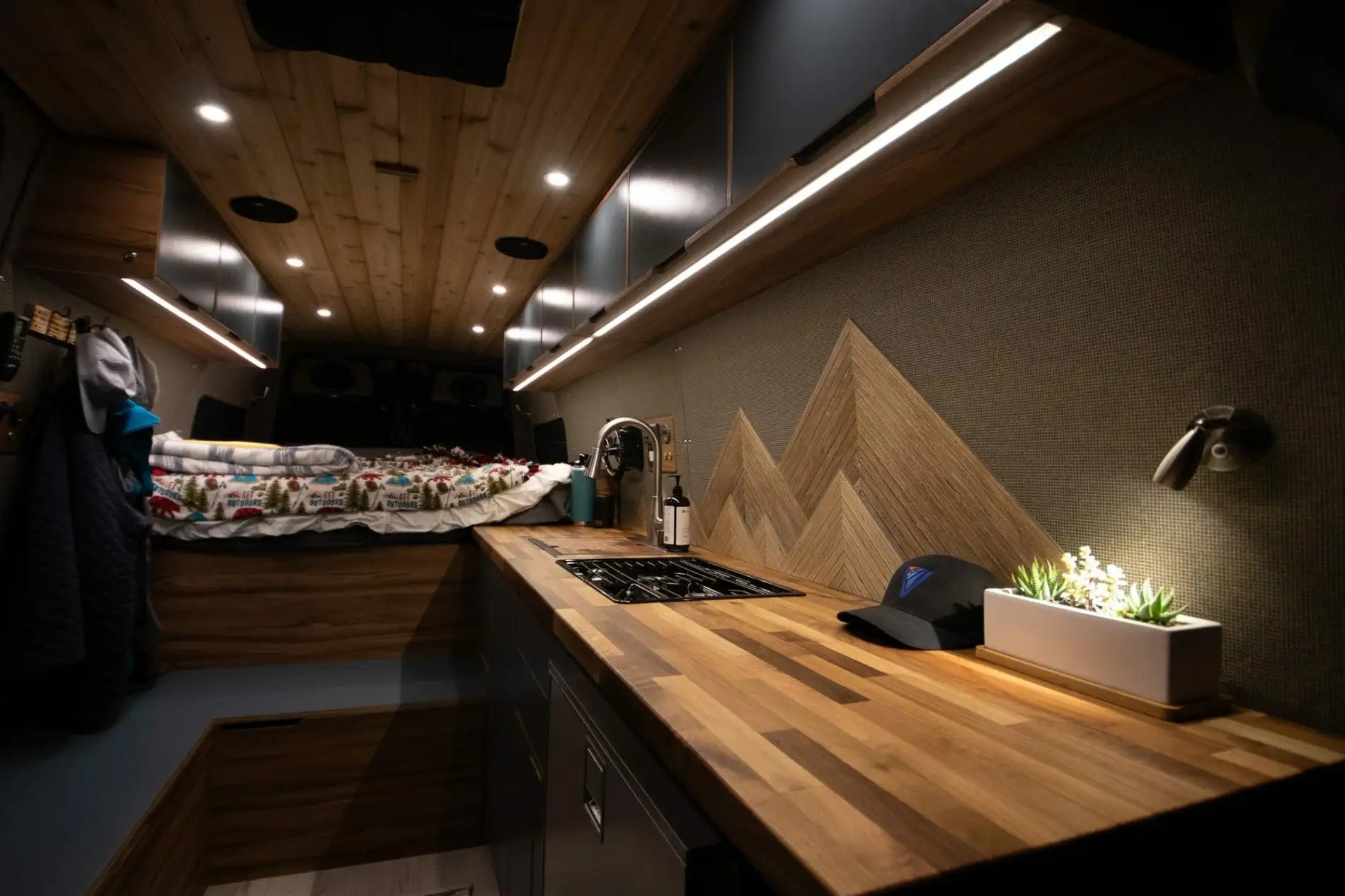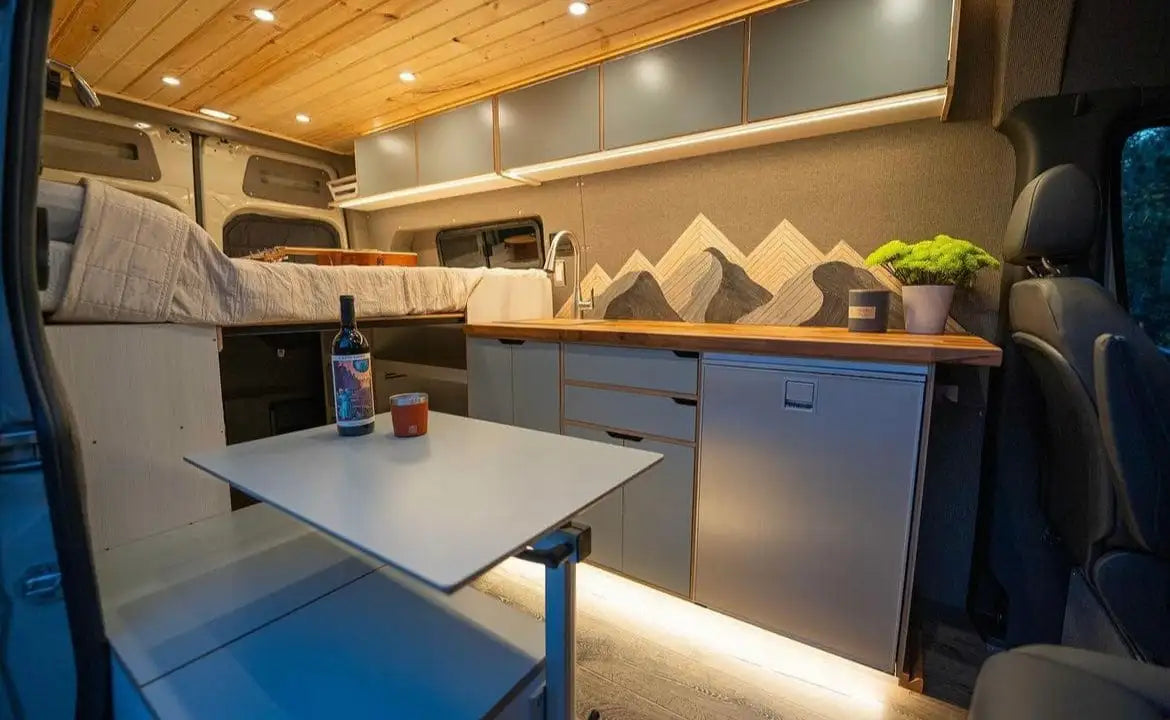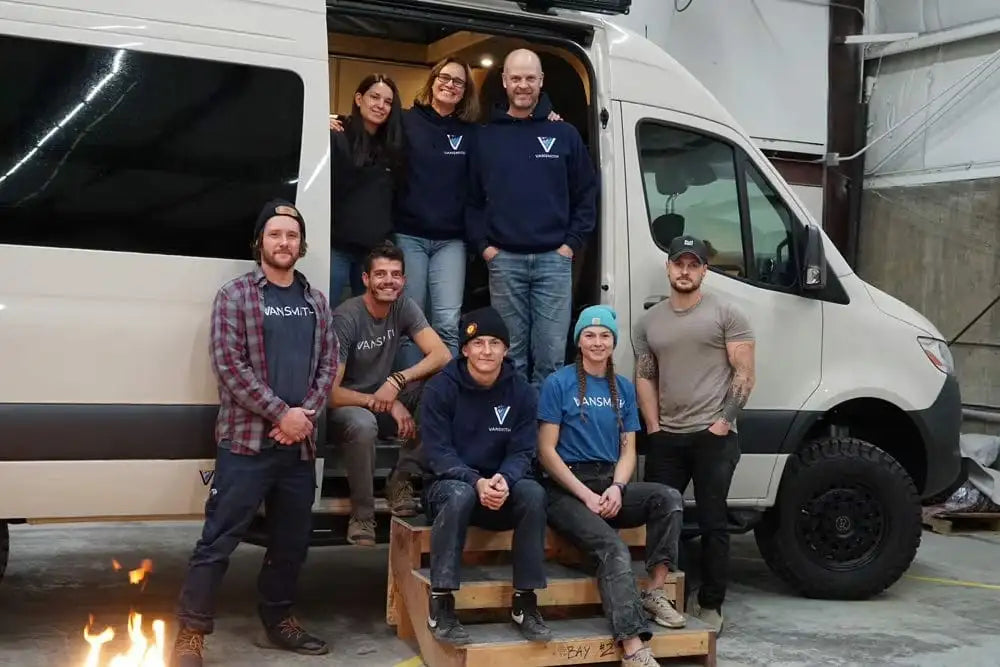
By Roberto, CMO and Co-founder
Installing a ford transit shower might seem impossible in a compact van, but it's absolutely achievable with proper planning. Our team has perfected shower installations that maximize space while delivering a luxurious experience. This comprehensive guide reveals how we transform Transit vans into mobile bathrooms.
Why Choose a Ford Transit Shower Setup?
The Ford Transit offers exceptional height and width for shower installations. Most builds accommodate full-size adults comfortably. Additionally, the robust frame supports plumbing systems and water storage without compromising structural integrity.
Transit vans provide multiple layout options for bathroom placement. Rear corner installations maximize living space. Meanwhile, mid-van placements create better weight distribution and easier access to plumbing connections.
Water capacity remains crucial for extended adventures. Our ford transit shower designs typically include 40-100 gallon freshwater tanks. This capacity supports 5-10 minute showers for several days off-grid.
Planning Your Transit Van Shower Layout
Space Requirements and Considerations
Standard shower dimensions require minimum 30x30 inches floor space. However, 36x36 inches provides significantly more comfort. Ceiling height should accommodate the tallest user plus six inches for showerhead clearance.
Door placement affects both functionality and space efficiency. Sliding doors work best in tight quarters. Alternatively, bi-fold doors offer wider openings while consuming less swing space than traditional hinged doors.
Floor reinforcement prevents water damage and structural issues. We install marine-grade plywood subflooring with proper vapor barriers. This foundation supports tile, vinyl, or composite shower pans effectively.
Plumbing System Basics
Hot water systems vary based on usage patterns and power availability. Tankless propane heaters provide unlimited hot water but require adequate ventilation. Electric tank heaters work well with robust solar systems.
Pump selection impacts water pressure and flow rates. Variable speed pumps deliver consistent pressure while conserving battery power. Accumulator tanks smooth pressure fluctuations and reduce pump cycling.
Water filtration extends system life and improves shower quality. Sediment filters protect pumps and fixtures. Carbon filters remove chlorine taste and odors from municipal water sources.
Essential Components for Your Ford Transit Shower
Water Storage Solutions
Freshwater tanks should hold 3-5 days worth of water for your typical usage. Plastic tanks resist corrosion but may retain odors. Stainless steel tanks cost more but provide superior longevity and taste neutrality.
Tank placement affects weight distribution and accessibility. Under-bed storage keeps weight low and centered. External mounting saves interior space but requires freeze protection in cold climates.
Gravity-fed systems eliminate pump noise but limit water pressure. Pressurized systems provide consistent flow but consume more battery power and require additional components like accumulator tanks.
Drainage Systems
Gray water tanks collect shower drainage for proper disposal. Tank capacity should match freshwater storage to avoid overflow situations. Sensors monitor tank levels and prevent embarrassing mishaps.
Drain hose routing requires careful planning to prevent freezing and ensure proper flow. Heated drain valves prevent ice blockages in sub-freezing temperatures. Insulation around exposed plumbing prevents costly freeze damage.
Shower pan design channels water efficiently toward drain outlets. One-piece fiberglass pans eliminate leak-prone seams. Custom tile installations allow personalized aesthetics but require expert waterproofing techniques.
Ventilation Requirements
Moisture management prevents mold growth and structural damage. Exhaust fans should move 50+ CFM to quickly remove humid air. Variable speed controls balance air exchange with battery conservation.
Fan placement creates optimal airflow patterns throughout the shower area. Ceiling-mounted fans pull moisture upward naturally. Wall-mounted units may work better in low-ceiling applications.
Fresh air intake prevents negative pressure that reduces fan efficiency. Louvered vents allow airflow while blocking insects and debris. Automatic louvers open only when fans operate to minimize heat loss.
Step-by-Step Installation Process
Prep Work and Framing
Wall framing provides mounting points for fixtures and storage. 2x2 lumber works well for most applications. Metal framing resists moisture better but requires specialized tools and techniques.
Electrical rough-in happens before insulation and wall coverings. GFCI protection is mandatory for all bathroom circuits. 12-volt systems simplify wiring but may limit fixture choices compared to 120-volt installations.
Insulation prevents condensation and improves comfort during temperature extremes. Closed-cell foam works best in humid environments. Vapor barriers on the warm side prevent moisture infiltration into wall cavities.
Plumbing Installation
Rough plumbing installation requires precise measurements and proper slope calculations. PEX tubing offers flexibility and freeze resistance compared to rigid copper or CPVC. However, support clips prevent sagging and maintain proper routing.
Hot and cold supply lines need adequate insulation to maintain temperature and prevent condensation. Furthermore, shut-off valves at each fixture simplify maintenance and emergency repairs without draining entire systems.
Drain line installation requires minimum 2% slope toward gray water tanks. Consequently, P-traps prevent sewer gases from entering living spaces while maintaining proper drainage flow rates.
Finishing Touches
Wall covering options include FRP panels, tile, or composite materials. Each offers different aesthetics, durability, and installation complexity. Moreover, proper substrate preparation ensures long-lasting adhesion regardless of material choice.
Fixture installation should follow manufacturer specifications for mounting and sealing. High-quality caulk prevents water infiltration around edges and joints. Additionally, regular maintenance keeps seals effective throughout the van's service life.
Accessories like soap dispensers, towel bars, and storage shelves enhance functionality. Marine-grade hardware resists corrosion in humid environments. Furthermore, removable items facilitate deep cleaning and maintenance access.
Our Duo XL Build: A Ford Transit Shower Success Story
Our flagship Duo XL demonstrates how a properly designed ford transit shower enhances van life experiences. This build features a 36x32 inch shower with rain head and handheld combo. The layout accommodates 6'4" users comfortably.
The system includes a 60-gallon freshwater tank and 45-gallon gray water storage. A tankless propane heater provides endless hot water for extended off-grid adventures. Variable speed pumps deliver spa-like water pressure while conserving battery power.
Custom teak flooring and subway tile create a luxurious aesthetic that rivals home bathrooms. LED lighting with dimmer controls provides task lighting and ambiance. The exhaust fan removes moisture quickly to prevent condensation issues.
Transform Your Transit Into a Mobile Spa
A well-designed ford transit shower transforms van life from roughing it to refined adventure. Proper planning ensures reliable operation and prevents costly mistakes. Our proven methods deliver professional results that enhance your mobile lifestyle.
Quality components and expert installation create systems that perform reliably for years. Whether you tackle the project yourself or work with professionals, this guide provides the foundation for success.
Ready to add a shower to your Transit van? Our team specializes in custom installations that maximize space and functionality. Contact us to discuss your specific needs and explore our proven design solutions.




